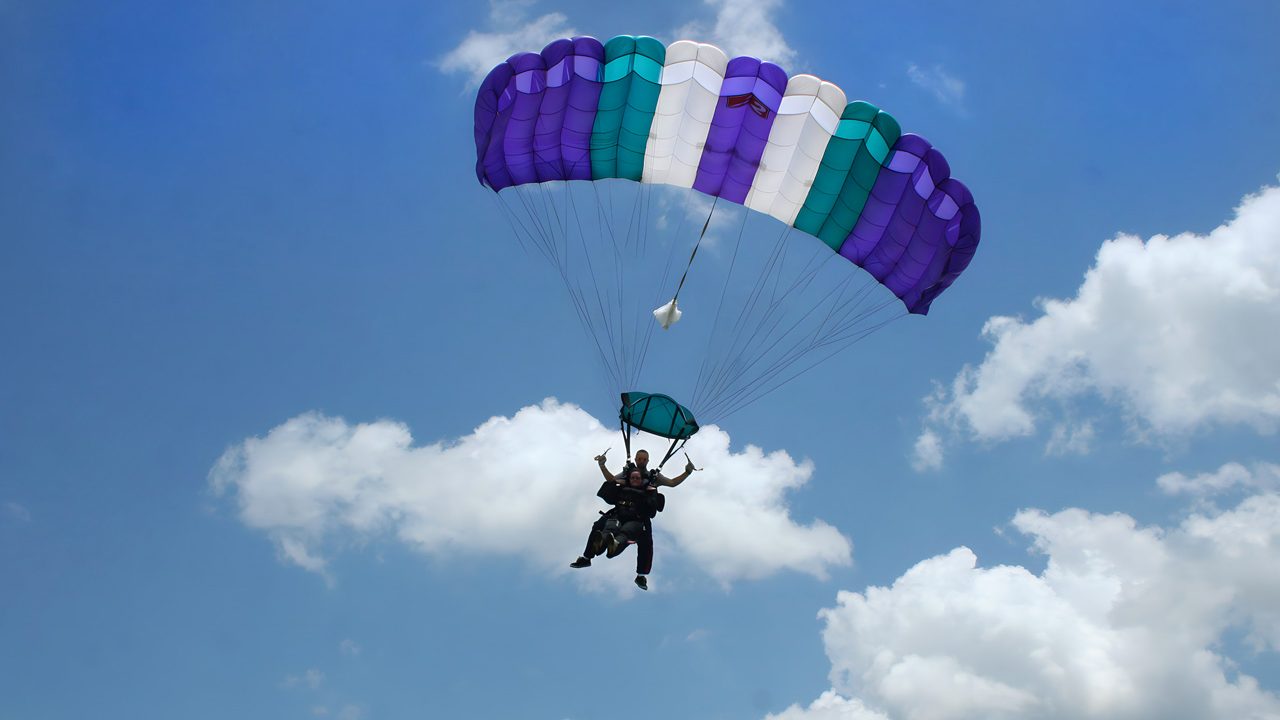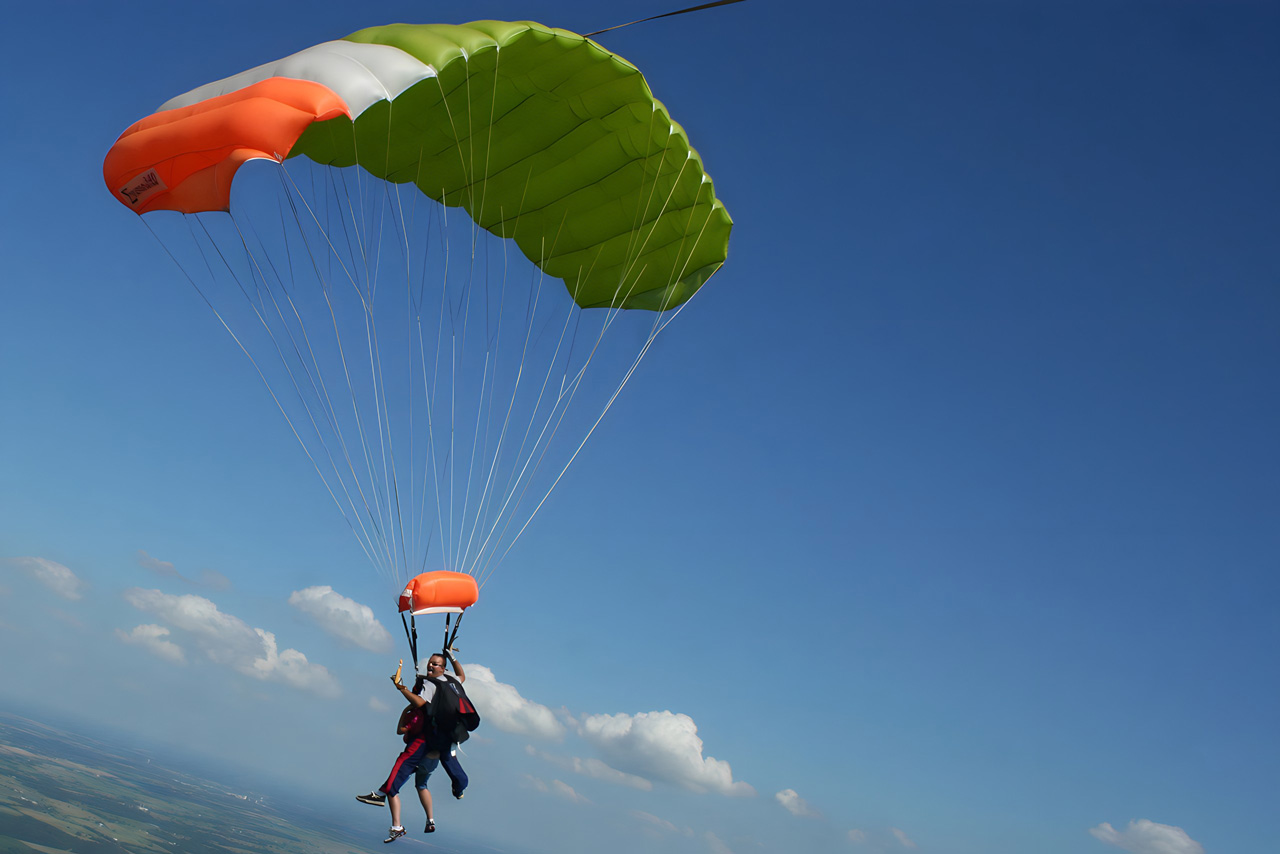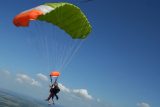All About the Parachute: From Opening to Landing
Skydiving
Posted by: OZARKS Skydive Center
8 years ago
For the time you spend at the skydiving dropzone, you’ll have two new best friends–and they’ll be made of nylon. Those are your parachutes, dear reader, and you may rest assured that they are very interesting friends indeed. If you’re a soon-to-be tandem student, we’d love to take this opportunity to get you acquainted with these vital pieces of equipment. We’ll direct the conversation by calling up the most common questions we’re asked on the subject. Maybe one of these questions is yours!

“Wait,Two parachutes?! I only ever see one.”
Yessiree. On a normal skydive–which follows both United States Parachute Association guidelines and FAA regulations for gear, each skydiving container (the backpack-style harness you recognize from the movies) must contain two parachutes. The main parachute is the one that the skydiver deploys on every normal skydive, and it sits in the bottom part of the container, at the small of the jumper’s back. The reserve parachute–which is only deployed in the event of an emergency–sits above it, over the skydiver’s shoulder blades.
“How are those two parachutes different? Are they different?”
Indeed they are. The main is a nine-celled, ram-air canopy. That means that it’s an airfoil designed in nine segments which inflate with air through inlets at the leading edge. The main canopy is designed to be agile, to glide long distances and facilitate a fun, zippy experience in flight. On the other hand, the reserve is built with one thing in mind: a fast, stable, on-heading opening, because that’s the only thing the pilot will want at the time, fun be damned. Reserve parachutes do this job extraordinarily well.
“Am I likely to see that reserve parachute?”
Nope. Reserve deployments in modern skydiving are pretty rare. Skydiving malfunctions, in fact–even when the subject skydiver habitually jumps dozens of times per week–are uncommon. The technology we use has been tweaked and optimized to the point where parachutes rarely fail: They deploy well, inflate efficiently and are unlikely to tangle or suffer damage upon deployment (as was the case in the old days).
The use of a reserve parachute is quite similar between sport-skydiving and tandem skydiving, and it’s super-simple (as it must be). When a compromising malfunction occurs, the jumper underneath it pulls a handle on the skydiving rig to detach (“cut away”) the malfunctioning main parachute. The skydiver then pulls the handle on the other side to deploy the reserve.
“What’s it like when the parachute opens?”
During the transition from freefall to canopy flight, you can expect to feel the opening parachute slow you down significantly. That’s its job, after all! It’s much gentler than you might expect; you’ll just suddenly realize you’re hanging head-up, legs-down in the harness after spending your freefall with your belly to the earth.

“How do you steer a parachute?”
The lines at the back of the parachute enable us to pilot it. We call these lines the “steering lines” for obvious reasons. These lines fan out like tree branches from their correlating connection points on the container (“risers”). The steering lines are controlled by the canopy pilot via toggles, attached to the bottom.
By pulling down on the right toggle, we tug down on the right corner of the parachute down, creating a dynamic of air that turns the parachute to the right. The same is true for the left. We can also turn–or exaggerate a turn–by leaning to one direction or the other in our harness. When the jump is over and the ground is imminent, we pull both toggles down in a measured way to “flare” the parachute. This pulls the entire back side of the parachute down, effectively slowing the system down to a safe landing speed.
Got more questions? …How about an in-person learning experience? We’d love to teach you everything you want to know about skydiving parachutes, up close and in living color!



